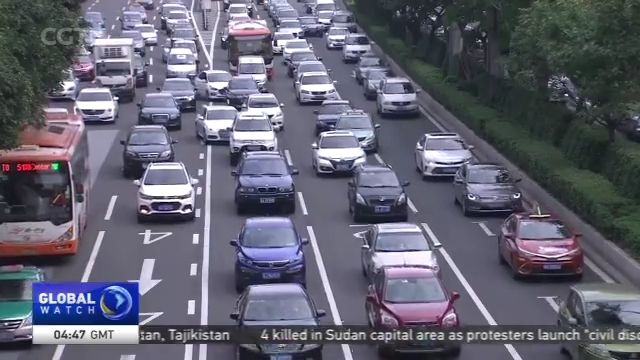
13:13, 10-Jun-2019
More Wheels on the Way: Guangzhou & Shenzhen set to ease car ownership restrictions
Updated
18:20, 11-Jun-2019
03:37

China's National Development and Reform Commission has issued a new policy that will allow major cities to issue more driver's licenses. The move hopes to boost car consumption, while also allowing more people to purchase a vehicle. The southern cities of Guangzhou and Shenzhen are the first to adopt the new policy. CGTN's Zhu Longzhou has the update.
Like other mega cities in China, Guangzhou and Shenzhen share the same concern when it comes to traffic. The two cities currently limit the number of new license plates issued each year, set at 120-thousand and 100-thousand respectively.
GUANGZHOU RESIDENT "Compared with before, I didn't see any changes to the traffic. We are used to congestion in the afternoon in Guangzhou and simply avoid driving as much as possible."
GUANGZHOU RESIDENT "I feel it's very crowded with so many people and cars filling the streets, especially during rush hour and holiday times, there's too much traffic."
Even cars are populated in the streets, yet demand greatly surpasses supply. A mere zero-point-2-4-percent of bidders received a license this month in Shenzhen. But things are about to change, as a new policy from the NDRC, is set to ease restrictions.
PROF. LIU CHUNSHENG CENTRAL UNIVERSITY OF FINANCE & ECONOMICS "Currently, the overall consumption of China's automobile market has seen a downward trend. Since 2018, the purchase and sales of passenger cars in China have declined significantly, and there has been no fundamental improvement this year. In this case, how to enhance consumption vitality, especially in terms of promoting the growth of consumption, is very important."
On June 6th, the NDRC released a new policy stating local governments shall not impose restrictions on the use and purchase of new energy vehicles, and restrictions that are already in place shall be canceled.
For current auto-market, based on local government figures, quota restrictions have led to a decline in vehicle purchases. And in the first quarter of the year, retail sales of automotive goods above the quota in Guangdong fell by 7-point-7 percent year-on-year, seeing a decline of 17-point-5 percentage points.
XIAO YONG VICE GENERAL MANAGER, GACNE "Now, China's automobile industry has entered an era of negative growth for the first time in two decades. Since the second half of 2018, the growth of China's entire automobile market has entered a relatively weak stage. In the first quarter of 2019, China's overall passenger-vehicle market ratio actually fell by more than 10 percent, which means it saw a double-digit decline."
As Guangdong is a major automobile manufacturing province, both Guangzhou and Shenzhen are looking to boost the development of the industry through this new policy. From June to December this year, a total of 180,000 license plates will be added to both cities.
XIAO YONG VICE GENERAL MANAGER, GACNE "Guangzhou and Shenzhen now have an additional 180,000 vehicle plates. This will actually improve local markets by stimulating consumption. Customers will feel that the government is guiding and encouraging them in car purchases."
The two cities' new policy changes could set an example for other cities in China in terms of boosting sales and providing a mode of transportation for locals. But at the same time, they'll have to balance this with concerns of traffic congestion, while also taking into account transportation infrastructure. Zhu Longzhou, CGTN, Guangzhou.

SITEMAP
Copyright © 2018 CGTN. Beijing ICP prepared NO.16065310-3
Copyright © 2018 CGTN. Beijing ICP prepared NO.16065310-3